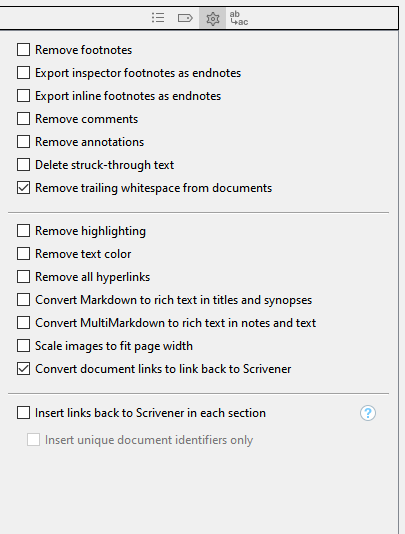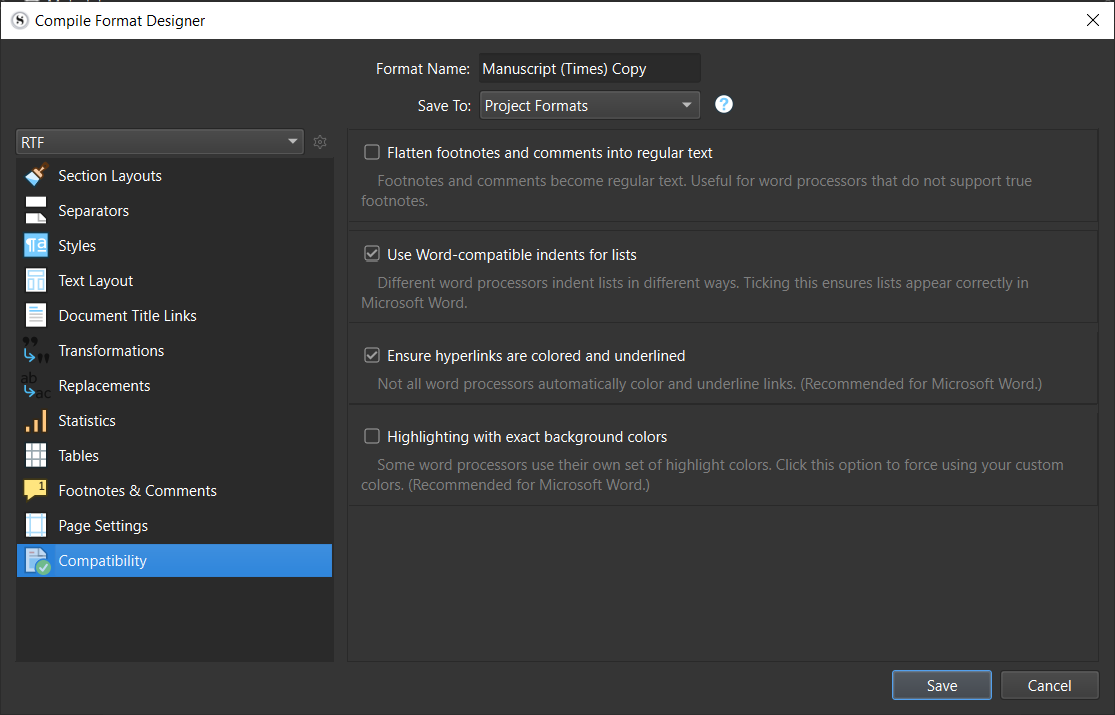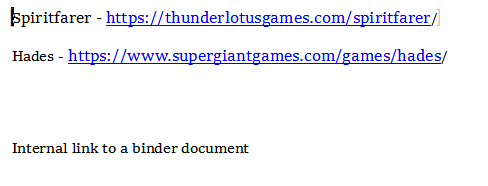Hi.
For my printouts, I used to compile to PDF then print.
For technical reasons, I am no longer doing this, but rather compiling to RTF then print.
But I have this issue that I can’t seem to resolve:
When compiling to PDF, my internal links are underlined, and print as such. (I print in B&W, and therefor, without the blue font, that’s how I know a link is actually a link.)
Except that now that I am compiling to RTF, I just can’t get my internal links to compile with the underline. (They are not blue either, but that I don’t care.)
Is there a setting somewhere I would have missed ?
Thanks.
[EDIT] As this thread developed, I realize that I had the above statement wrong. It doesn’t work for PDF either. I just happened to notice the issue quite some time after changing my approach to compiling for a printout from PDF to RTF, and thought it worked for me back then. (I probably just got lucky as to my compile scope at the time. I wasn’t doing things quite as I do now.)
P.S. I can manually underline my links in the editor and that works, but I’d prefer not.
I can totally see myself forgetting about that extra step in the rush of things… Made worse by the fact that I have no visual cue until I compile.
I have this option checked in the compile panel:
![]()
I tried with and without : that made no difference.
. . . . . . . . . .
These work (so I know the issue is not with the other app (LO) I use afterwards) :
![]()
![]()




